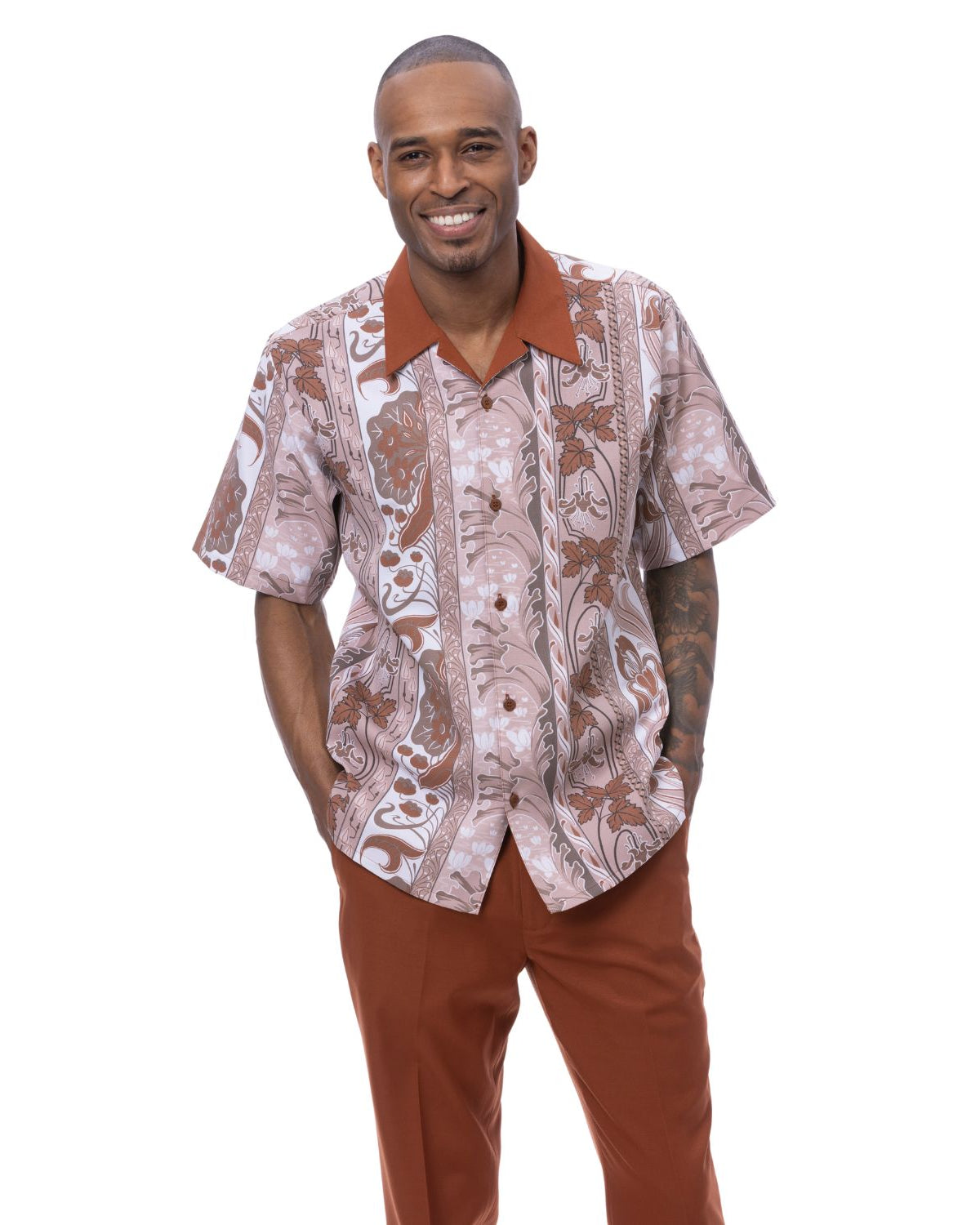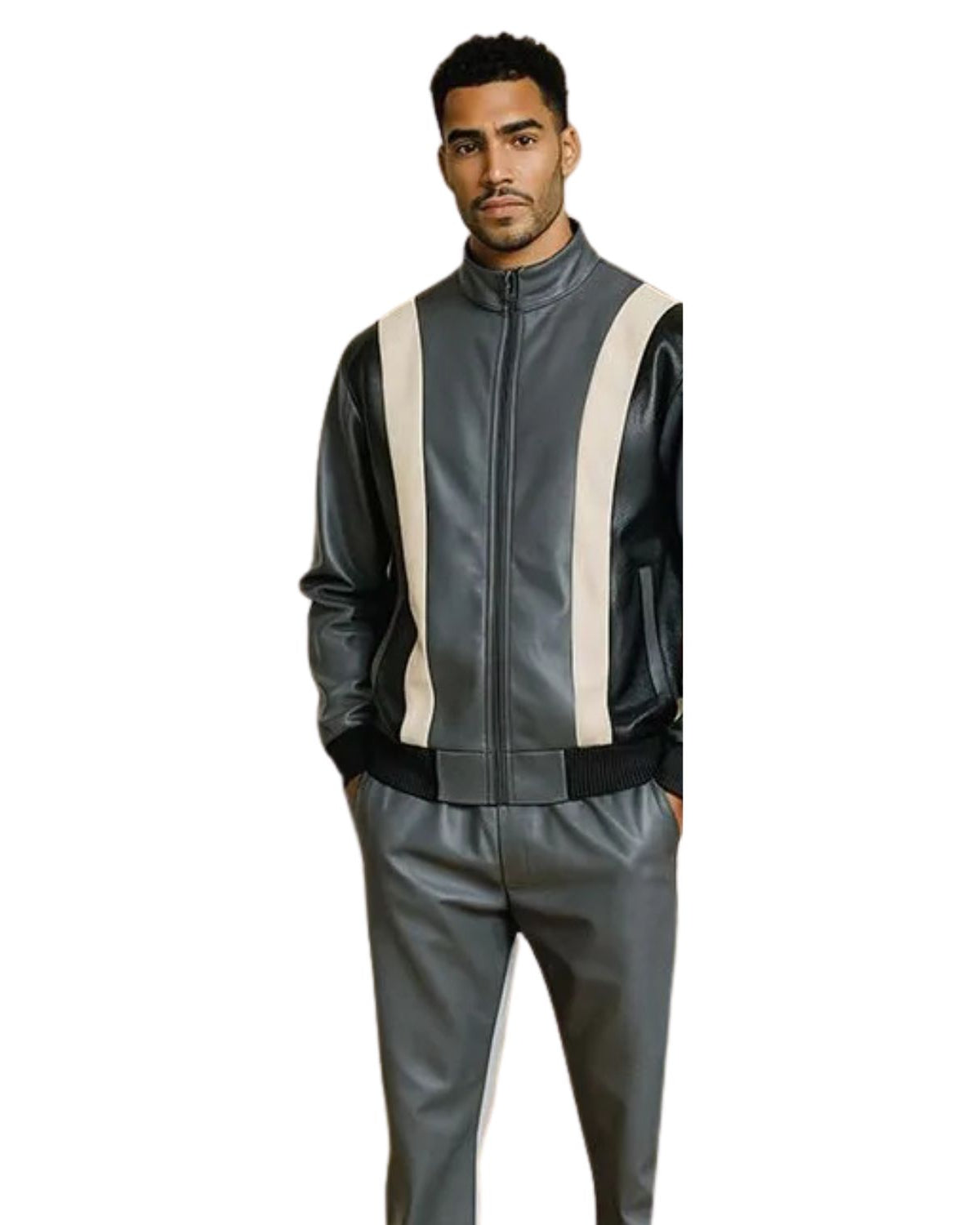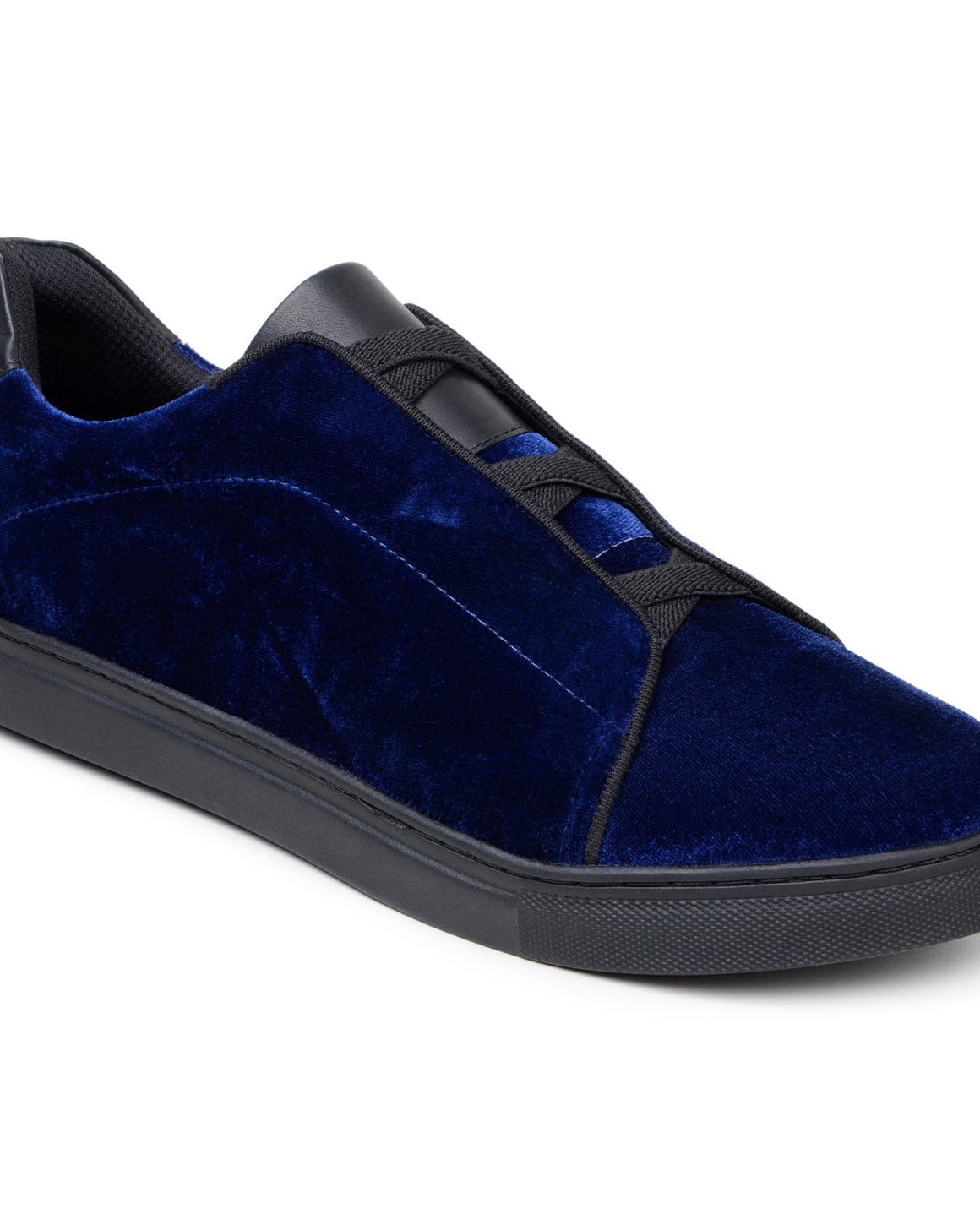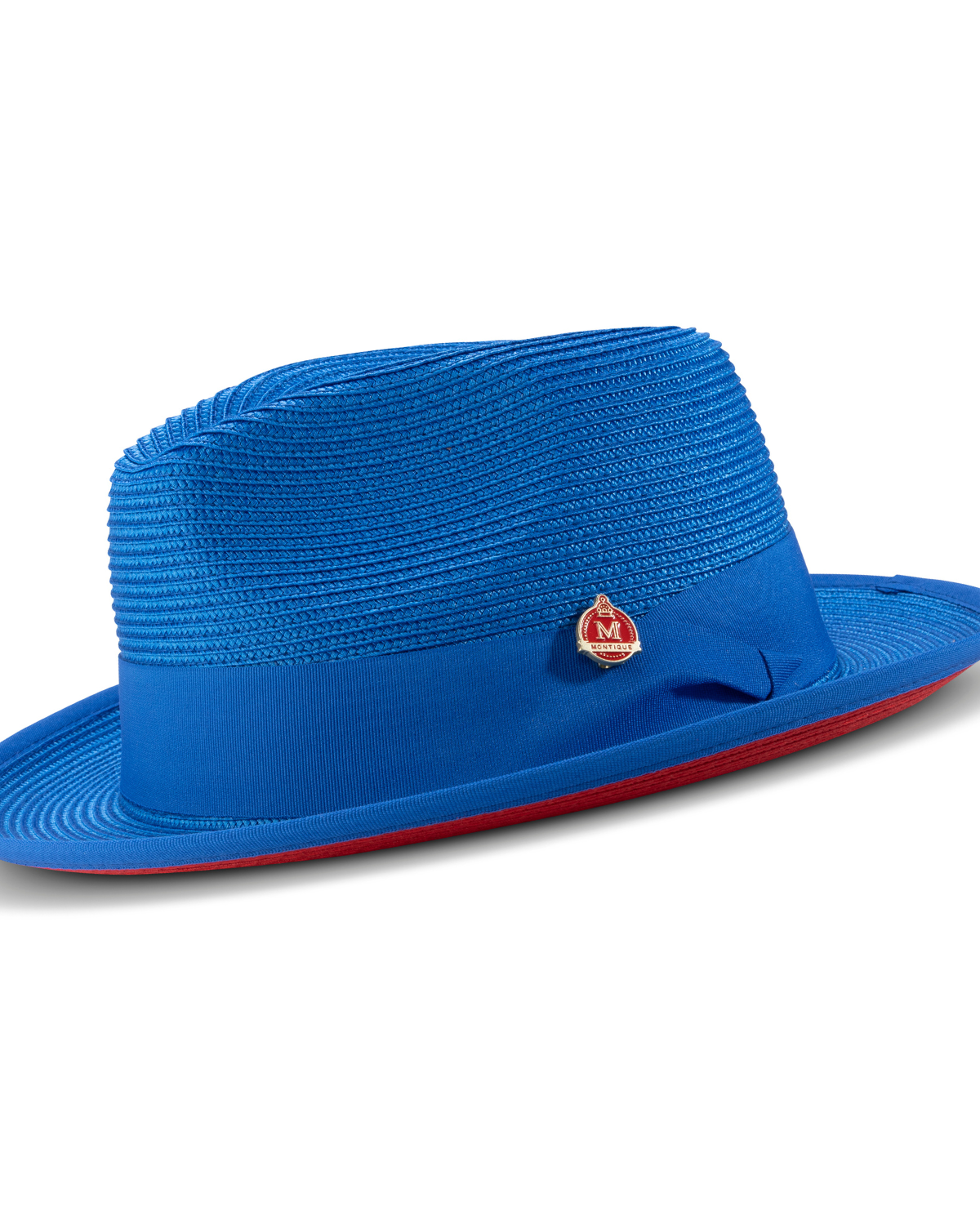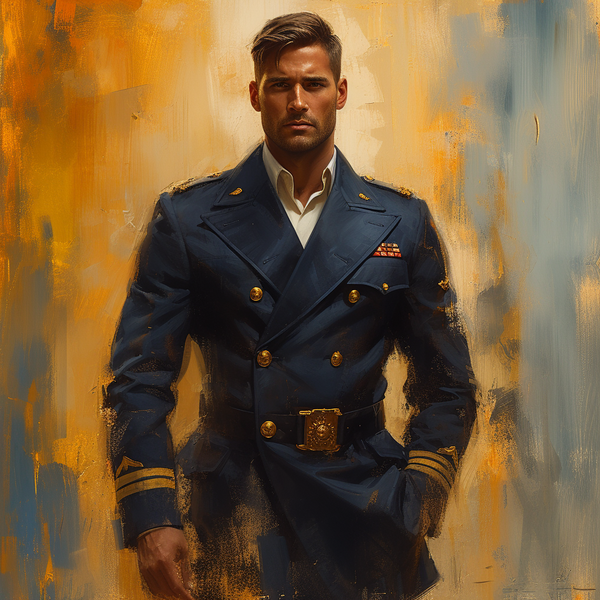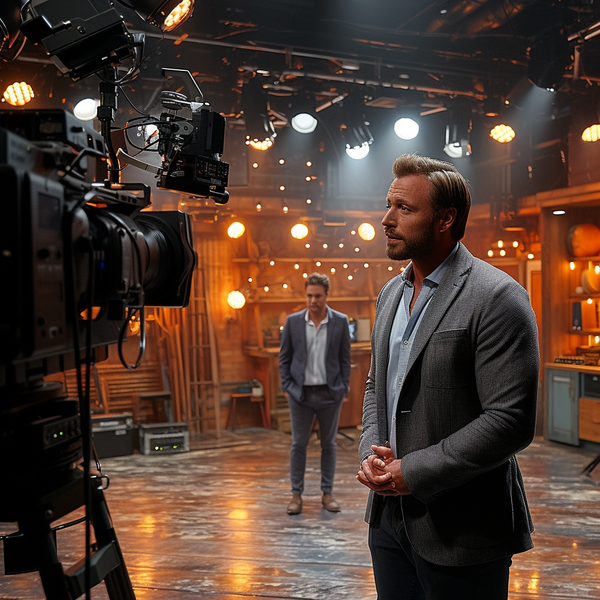Imagine the blazer, not merely as an article of clothing but as a testament to the evolution of men's fashion—a piece so versatile, it has navigated the waters of time from its naval origins to anchor itself firmly in the wardrobe of the modern man. The blazer's journey from a practical garment to a symbol of effortless style and sophistication mirrors the dynamic landscape of men's fashion itself.
Origins and Early History
The Naval Roots of the Blazer
Our yarn unspools back in the 19th century, with the ocean as our stage and the HMS Blazer's crew as our unwitting fashion pioneers. Dressed to the nines in navy blue double-breasted jackets, these seafarers were prepped to impress the highest echelon—none other than Queen Victoria herself. With gold buttons polished to a mirror shine and fabric sharp enough to salute, they were the very picture of naval nobility. But there's the rub: without even a whisper of intent, these sailors charted a course straight into the heart of enduring fashion. Those navy jackets weren't just uniforms; they were the first ripple of a sartorial wave that would swell to timeless prominence.
Transition from Military to Civilian Attire
As the tides turned, so did the blazer's role in the wardrobe chronicles. It swept ashore from its naval heritage, docking seamlessly into civilian life with an air of distinction that whispered of its martial past. This wasn't just a jacket; it was a mantle of refinement, a symbol of stature that draped equally well on the shoulders of aristocrats as it did on the everyman. It was a democratic garment in an age of sartorial hierarchy—a piece that proclaimed its wearer as a man of taste, regardless of his station.
The Significance of Colors and Patterns in Early Blazers
Now, let's talk hues and cues. The blazer's initial spectrum—vivid and varied—wasn't just for show. It was a semaphore of sorts, signaling one's loyalties and leanings. Whether it was the regal stripes of a club jacket that declared one's affinity or the defiant colors of a school blazer that shouted youthful exuberance, these were blazers as badges. They were emblems of camaraderie, of shared ideals, worn boldly on one's chest. In every thread, a narrative was spun, weaving together the fabric of identity and community. These patterns spoke volumes in an era where voice was everything.
The Classic Era: 1950s to 1980s
The Rise of the Blazer in Professional and Casual Settings
As the echoes of war faded, the world turned its eyes towards rebuilding and reinvention. In this era of newfound optimism, the blazer emerged as a cornerstone of the gentleman's wardrobe. It crossed the divide between formality and relaxation with an elegance that was effortless yet deliberate. For the man climbing the ladder of success in the post-war boom, the blazer became more than attire—it was a declaration of ambition, a symbol of having arrived. In boardrooms, at luncheons, and during twilight soirees, the blazer reigned supreme, its versatility unchallenged, its appeal universal.
Key Features of Classic Blazers: Materials, Colors, and Styles
This golden age witnessed the blazer in its full glory, a masterpiece tailored from the most exquisite wools and tweeds known to the discerning man. The palette expanded beyond the staple navy and charcoal to embrace richer, more audacious colors—olive greens, burgundies, and even plaids that danced on the edge of daring. These were blazers that carried the weight of tradition while flirting with the excitement of the modern age. They featured structured shoulders, nipped waists, and a silhouette that whispered of power and poise.
Influential Figures and Their Impact on Blazer Popularity
The silver screen became the window to this world of style, with icons like Cary Grant and Sean Connery serving as its chiseled ambassadors. They wore their blazers not just as articles of clothing but as extensions of their personas—effortless, assured, and infinitely charming. These were men who knew the power of a well-fitted blazer, who understood that style was as much about the man as it was about the garment. They inspired a generation, igniting a love affair with the blazer that would endure for decades. Each appearance in a Hitchcock thriller or a Bond escapade wasn't just entertainment; it was a lesson in sartorial elegance, an invitation to mirror their relaxed confidence.
The Transition Period: 1990s to Early 2000s
Changes in Fashion Trends: Relaxed Fits and Casual Styles
As the 20th century drew to a close, the blazer shrugged off its stiff upper lip, opting instead for a more relaxed demeanor that mirrored the laid-back attitude of the era. This wasn't just a garment loosening its proverbial tie; it was a reflection of a society easing into a new millennium. The blazer became an emblem of versatility, as essential to a weekend wardrobe as it was to the workwear rotation. It found a way to stay relevant, comfortable, and, above all, effortlessly cool.
The Introduction of New Materials and Designs
Innovation didn't just knock on the blazer's door; it let itself in. The 90s saw the introduction of fabrics that stretched, breathed, and moved with a dynamism previously unknown to traditional tailoring. These weren't your grandfather's stiff tweeds but textiles that could bounce back from a long flight without a wrinkle in sight. Blends of natural and synthetic fibers gave rise to blazers that could withstand a day's work and still cut a fine figure at dinner. It was the dawn of a new design ethos where comfort didn't compromise style, and functionality became a form of fashion.
The Blazer in Pop Culture and Media
The blazer's journey through the 90s and early 2000s was televised for all to see. It graced the shoulders of TV anchors and framed the silhouettes of cinema's leading men, making regular appearances in sitcoms and blockbusters alike. The blazer wasn't just clothing; it was a character, a narrative device that communicated status, style, and sometimes even the punchline. As it moved through various on-screen narratives, it wove itself into the fabric of pop culture, influencing what men wore off-screen. It showed that a well-placed blazer could steal the scene or subtly support it, proving that in the world of style, the blazer had become a leading player.
The Modern Era: 2010s to Present
The Resurgence of Tailored Fits and Bespoke Designs
In the modern wardrobe, the blazer has made a roaring comeback, this time with a sharper cut and a keener eye on individuality. Tailoring, once a standard reserved for the elite, has democratised, inviting every man to experience the allure of a custom fit. This is no mere nod to the past; it's a renaissance of bespoke elegance, merged with the technological advancements of the 21st century. Precision laser cuts, 3D fitting sessions, all in service of the perfect silhouette—today's blazer is an ode to the craft, a testament to the tailor's art.
Blending Tradition with Innovation: Smart-Casual and Athleisure Trends
The blazer today isn't just for the boardroom; it's for the street, the café, the weekend getaway. Marrying the sophistication of yesteryears with the pulse of current trends, the blazer now strides confidently across the smart-casual divide. It's the chameleon of the fashion world, at ease atop a crisp button-down or a graphic tee, bridging the gap between athleisure and aristocracy. This garment is not just about looking good; it's about feeling right in any setting—proof that versatility can indeed be stylish.
Eco-Friendly and Sustainable Practices in Blazer Production
As we forge ahead, the blazer's narrative takes on an ethical dimension. The modern blazer doesn't just look good—it does good. Sustainable fabrics, eco-conscious production methods, and ethical labor practices are the new standards defining its craftsmanship. We're witnessing a revolution where the threads spun are as green as the ethos behind them. The contemporary blazer doesn't just fit the man; it fits the world he inhabits, embracing a future where fashion is as responsible as it is radiant.
Styling Blazers Through the Ages
Classic Pairing and Styling Tips: The timeless combo? A well-fitted navy blazer, crisp white shirt, and chinos. Fit is king: aim for a silhouette that’s snug but not tight, ensuring the blazer looks tailor-made for you.
Modern Ways to Wear a Blazer: Today, blazers break the mold. Pair a tweed blazer with a graphic tee and distressed jeans for a rule-bending ensemble. It’s all about mixing textures and patterns for a look that’s distinctly your own.
Accessorizing with Contemporary and Vintage Pieces: Let accessories be your outfit's unsung heroes. A pop of color from a pocket square or the classic charm of a vintage watch can elevate your blazer game. Dare to be bold.
The Future of Blazers
Emerging Trends: Expect softer tailoring, playful fabrics, and blazers that make a statement. The future is looking relaxed but undeniably stylish.
Technology’s Role: Bespoke goes mainstream with custom-fit apps and smart fabrics, promising blazers that not only fit perfectly but also adapt to your body's needs.
Predictions: Sustainable materials and designs that cater to versatility will lead the way. Blazers that can change color or pattern? Don’t count it out.
In Conclusion
As we've journeyed from the classic to the contemporary, one thing remains clear: the blazer's ability to reinvent itself while maintaining its timeless appeal is unmatched. It's a testament to the blazer's enduring place in men's fashion—a piece that has evolved but never gone out of style.
Now it's your turn to take the baton and run with it. Mix that vintage blazer with your favorite streetwear, accessorize with panache, and don't forget to play with patterns and textures.
Dive into our world at Suits & More, where style meets substance, and your blazer is waiting to become a part of your legacy.

